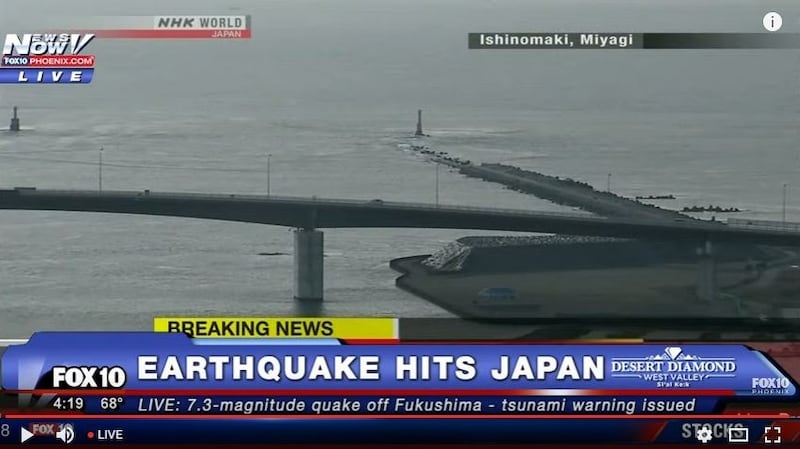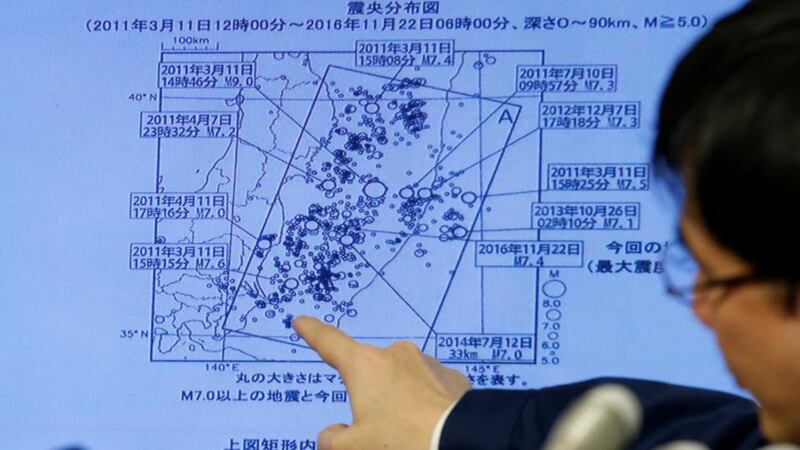An earthquake with a magnitude of 6.9 hit northern Japan on Tuesday, the Japan Meteorological Agency said, issuing tsunami alerts for much of the nation’s northern Pacific coast.
The epicentre of the earthquake, which was felt in Tokyo, was off the coast of Fukushima prefecture at a depth of about 10km (six miles), the agency added.
There were no immediate reports of damage or injury, which struck at almost 9pm Irish time.


Replay on NHK just now showed shaking from todays quake in Japan. pic.twitter.com/RFfxzcRS8X
— Jim Dalrymple II (@JimDalrympleII) November 21, 2016
Video from NHK live stream shows water rushing out of the harbor at Iwaki City in Japan just now. pic.twitter.com/O6vqjg27wz
— Jim Dalrymple II (@JimDalrympleII) November 21, 2016
Tokyo Electric Power Co was checking its nuclear plants in Fukushima for damage, said public broadcaster NHK. The utility was not immediately available for comment.
Tohoku Electric Power Co said there was no damage to its Onagawa nuclear plant.
Retreating sea
Television footage showed ships moving out to sea from Fukushima harbours as the meteorological agency warned of a tsunami of 3m (10ft) for Fukushima, where Tepco’s Daiichi nuclear plant was devastated in a March 2011 quake and tsunami.
Earthquakes are common in Japan, one of the world’s most seismically active areas. Japan accounts for about 20 per cent of the world’s earthquakes of magnitude 6 or greater.
The March 11th, 2011, quake was magnitude 9, the strongest quake in Japan on record. The massive tsunami it triggered caused the world’s worst nuclear crisis since Chernobyl, a quarter of a century earlier.
The US Geological Survey initially put Tuesday’s quake at a magnitude of 7.3 but have since downgraded it to 6.9.
All nuclear plants on the coast threatened by the tsunami were shut down in the wake of the Fukushima disaster. Only two reactors are operating in Japan, both in the southwest of the country.
Even when in shutdown mode, nuclear plants need cooling systems operating to keep spent fuel cool.
Reuters










